Feature: From the frontlines of Italy’s COVID-19 fight
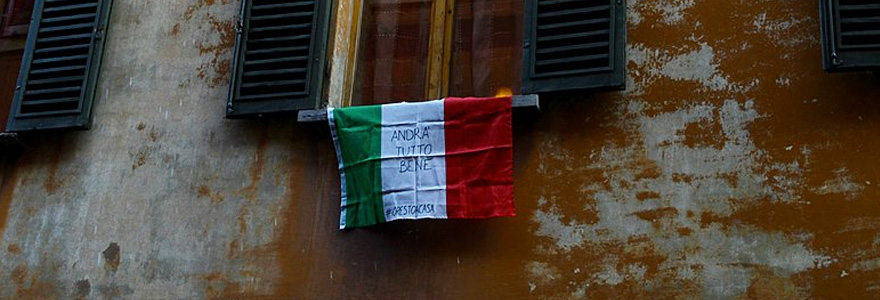
It’s been described as a war zone. On the frontlines of the coronavirus outbreak in Italy, intensive care units are overwhelmed, ventilators are in short supply and regional health authorities have been imploring retired health care professionals to return to work.
It’s this escalating situation that motivated Dr. Fabio Salerno, a nephrologist and PhD Candidate at Schulich Medicine & Dentistry, to return to his home country last week to help care for patients and support his health care colleagues.
Working at a hospital in northern Italy’s Lombardy region, he is now at the epicentre of Europe’s COVID-19 outbreak.
His message to Canadians? Be responsible and stay home. “I think the biggest challenge of this pandemic is sensitizing people to the gravity of the situation,” he wrote in an email update.
For his PhD studies, Dr. Salerno is working with the Department of Medical Biophysics and the Kidney Clinical Research Unit, co-supervised by Dr. Christopher McIntyre and Grace Parraga, PhD. His research is focused on understanding the pulmonary determinants of chronic dialysis-related symptoms. With approval from the School of Graduate and Postdoctoral Studies, he is now on academic leave.
Dr. Salerno started working at Monza San Gerardo Hospital in Monza, Italy on March 23. He will be sending updates from Italy as he is able to.
*in order by most recent update
Wednesday, April 8
Still doing fine. Yesterday was my second rest day since I started this job.
I thought I had been managing the workload well, until, two days ago, I took a couple of hours to actually get up from the bed and have breakfast. I really needed a day off.
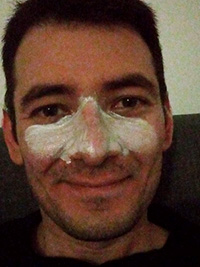 Working my way through Easter (today, a double shift; tomorrow, a night shift; and afternoon shifts on Saturday and Sunday), but I should have another rest day next Monday.
Working my way through Easter (today, a double shift; tomorrow, a night shift; and afternoon shifts on Saturday and Sunday), but I should have another rest day next Monday.
I’ve had some time to stop and reflect.
1. Hospital inpatients cannot receive visitors during their stay. Phone calls, video calls and pictures are essential to maintain contact with their loved ones, some dimension of humanity during this pandemic. Many people died without being able to see their loved ones, and sometimes a picture or a video call is the only memento of our patients' last days.
2. In Lombardy and nation-wide, newly diagnosed COVID-19 cases and ICU admissions have been slowly dropping over the past week. We are entering what the Italian government called ‘Phase 2’: living with coronavirus.
This is evidence that the national lockdown is finally showing its effects and an encouragement for other countries that are struggling to contain the pandemic: you can do this, just like we did.
3. As a result, we have more time to discuss each case, each person, weighing the available evidence to treat COVID-19 to the best of our knowledge and abilities. Conflicts in patient management inevitably arise, but I think they are a good sign: we can afford to have them, to disagree.
4. We have been basing most of our practice on open-label nonrandomized uncontrolled clinical trials, observational studies, case reports, non peer-reviewed publications (see the recent surge in preprint servers) and expert opinions. We are in dire need of more solid scientific evidence to do better.
5. Fake news, homemade remedies and magical thinking have been roaming freely since the early days of the pandemic. If you have a journalism and/or research background, please consider it a duty to verify the truthfulness of the source material and contribute to spreading correct information.
6. For those who have been hoarding PPE (face masks, N95 respirators especially) in light of the pandemic, it is time to share with those who may need them. It may prevent a person infected with COVID-19 from spreading the disease, or it may prevent a health care professional from getting sick so they can keep working to save lives. It is not only a responsibility towards people in need, but also sensible in view of the greater good.
7. Working with a multidisciplinary team is one of the most inspiring aspects of this job. I have been working daily with intensivists, infectious disease specialists, cardiologists, diabetologists, oncologists, hematologists, paediatricians, neonatologists, ophthalmologists. All working together. Everyone has a different take on the disease and different contributions to make. There is a lot to learn, given a little humility.
8. As hospitals have been fighting their war against COVID-19, focusing most of their resources on it, it is becoming apparent that patients suffering from other acute and chronic medical conditions are also indirect victims of the SARS-CoV-2 pandemic. For instance, surgeries and chemotherapy for cancer have been postponed; referral of people with acute coronary syndromes have been delayed, often with serious consequences.
9. Mental illness is common among the general population, hospital inpatients (and their relatives) and health care professionals. Stress from prolonged isolation, fear of getting infected, having lost loved ones and friends or working on the field are factors that affect us all to different extents. There is no better time to be understanding and empathetic towards other peoples' suffering.
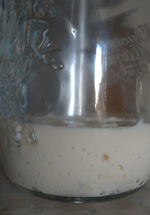 10. Speculation has been increasing about the lung function (e.g. pulmonary fibrosis) of COVID-19 survivors. This would be an interesting aspect to explore, to address the need of pulmonary rehabilitation and long-term consequences of the disease.
10. Speculation has been increasing about the lung function (e.g. pulmonary fibrosis) of COVID-19 survivors. This would be an interesting aspect to explore, to address the need of pulmonary rehabilitation and long-term consequences of the disease.
Now, some less serious notes:
11. The ear and nose sores from wearing face masks hurt like hell. I have been using a zinc oxide-based cream to treat the rashes (top photo).
12. Like toilet paper in North America, there is a nation-wide wheat, flour and yeast shortage in Italy, as Italians have turned to massive cooking and baking these days. I have been growing my own yeast since the early days (right photo).
Wednesday, April 1
I am no hero. As doctors, we swore an oath to be available to the authorities in case of a catastrophic event. What I have done may be considered commendable, but I know many other Italian physicians that did exactly the same as me. And it is no more commendable than what my other colleagues have been doing since the beginning of this pandemic.
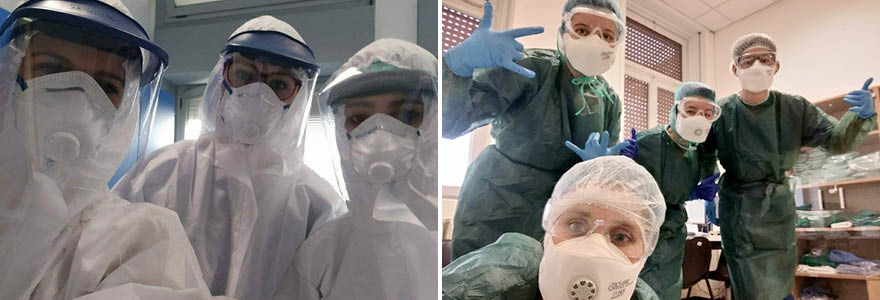
A balance of my first week of work and my first night shift:
Yesterday, I witnessed the first COVID-related death among my patients. This disease is brutally selective and discriminating. It affects the elderly, people with hypertension, diabetes, obesity, heart disease, cancer. In addition, it displays an odd behaviour. It behaves like a flu or a respiratory tract infection in the first week, although symptoms like the loss of taste and smell are also very common; most people recover at this point. In some others, after a deceptive initial improvement, fever starts to rise again. Respiratory symptoms worsen, until more complex and invasive forms of ventilation become necessary. The immune system reacts disproportionately and leads to acute respiratory distress syndrome (ARDS) and other organ failures. In other instances, the coagulation cascade is abnormally activated, leading to the formation of clots in the blood vessels and to deadly complications, such as pulmonary embolism.
There is little we can do. Our treatment is mostly supportive: we administer anti-inflammatory drugs, anticoagulants, nutrition, oxygen therapy. To this day, we cannot really treat the root cause, the SARS-CoV-2 virus.
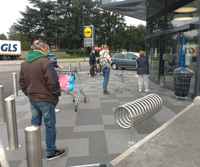 A few words on our numbers, our epidemiology. Our numbers seems scary - case fatality rate borders 10 per cent. This is because we have been testing mostly hospital inpatients, to allow admission in COVID-only wards, preventing other inpatients from being infected. In no way does this number reflect overall lethality from the disease. Estimates on true lethality are slightly higher than one per cent, although still higher than most countries given our highly represented elderly population.
A few words on our numbers, our epidemiology. Our numbers seems scary - case fatality rate borders 10 per cent. This is because we have been testing mostly hospital inpatients, to allow admission in COVID-only wards, preventing other inpatients from being infected. In no way does this number reflect overall lethality from the disease. Estimates on true lethality are slightly higher than one per cent, although still higher than most countries given our highly represented elderly population.
That said, how does everyday life look like? The photo on the right shows how Italians, notoriously incapable of forming a line in an orderly fashion, wait for their turn at the grocery store.
Friday, March 27
Everything here is different than it used to be. Shifts are short but very intense. It takes me a while to adjust, to understand, to make sense of what I see. Every day, I have long chats with friends from all over the world, and we compare our experiences, we share our concerns, our fears.
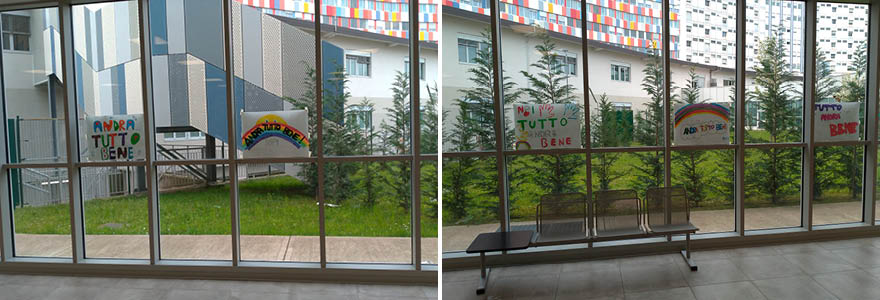
Since we have embarked on this experience, I feel I have a responsibility toward you all. In a way, you are like my patients, my family, my friends, my colleagues. I have a responsibility toward you. To share our fight, to let you know what we are doing, and that you are not alone in this.
I am not the only Italian physician who came back to help fight the pandemic. Many did, among my friends. Many of us came back to work in our hometowns, sometimes the same hometown that forced us to leave, looking for a better career abroad. We just could not sit by and see our hometowns being torn apart by COVID-19.
Why did I do this? Up until the day I made the decision, I thought it would be insane to go back home; that I would very likely get infected on the way back, that I would have had no place to stay, to protect my family and friends. But I did not want to leave my colleagues, family and friends alone. Some of them are getting sick, but luckily they are all okay at the moment. I could not bear to hide in my basement, reading books, as all hell was breaking loose just outside my front door.
We fight this pandemic day by day. We are kinder to each other. We cannot see each others' faces while wearing the full PPE set — we only look at each other in the eyes, while holding our gaze for longer, delving deeper. We recognize other people's smiles from their eyes.
The photo shows drawings in the hospital corridors. This is how the pandemic has brought us all closer, although we are physically distant. "Andrà tutto bene,” which means, “everything will be alright.”
A side note, about fear. After working so much in a COVID-only ward, fatigue takes over, and even the fear of getting infected becomes somewhat numb. It makes everything more bearable, in a way; it makes it lighter.
Time to sleep — I have my first night shift tomorrow.
Tuesday, March 24
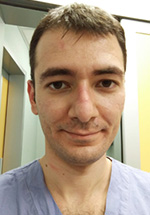 Six-hour shifts, except for the night shift which is 8:00 p.m. to 8:00 a.m. We (doctors and nurses) get changed once, wearing all the Personal Protective Equipment (PPE) available to us. No, not that very nice ‘space suit’ that you see in the movies, or in pictures from some other countries.
Six-hour shifts, except for the night shift which is 8:00 p.m. to 8:00 a.m. We (doctors and nurses) get changed once, wearing all the Personal Protective Equipment (PPE) available to us. No, not that very nice ‘space suit’ that you see in the movies, or in pictures from some other countries.
Then we enter the ‘dirty zone’ until the shift ends. We visit, talk to the inpatients, deliver oxygen and medications, draw blood, write, call their relatives, without changing. Everything we touch there is potentially infectious. Hard to keep your head straight when rebreathing your air inside the mask for six hours straight.
Once we are out, we are out.
Most of us working in the ‘dirty zone’ are young and healthy; we will be fine. Older and retired physicians are usually held back, but some volunteer, nonetheless. Several senior general practitioners, the first line against COVID-19 since the very beginning, have died of the disease.
On the upside, Italy's curve seems to be slowly flattening.
Sunday, March 22
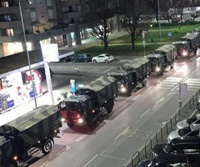 I kept my phone on last night – I usually don't. Not much sleep, melatonin didn't help. Now reading about London declaring a state of emergency after further evidence of community-based spread.
I kept my phone on last night – I usually don't. Not much sleep, melatonin didn't help. Now reading about London declaring a state of emergency after further evidence of community-based spread.
Meanwhile, here Italian Prime Minister Giuseppe Conte announced that all non-essential businesses are to be shut down; it is essential to minimize further disease exposure after a recent surge in newly diagnosed cases.
The worst affected hospitals are in dire need of staff, hospital and ICU beds, ventilators, PPE, drugs. Two of the most promising medications at the moment, Remdesivir (an antiviral medication) and Tocilizumab (an anti-IL6 monoclonal antibody, to control lung inflammation induced by SARS-CoV-2), are either unavailable or in severe shortage. This leads to prioritizing the best care options to younger patients.
The photo shows military trucks carrying the bodies of COVID-19 victims for cremation. This is from Bergamo, not far from here. People there are known to work hard and never complain.
Tomorrow, first day at the hospital – fingers crossed.
Saturday, March 21
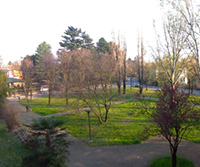 Due to the rapidly increasing diagnosed COVID-19 cases (6,557 new cases today, for a total of 53,578) and deaths (793, for a total of 4,825), the Italian government imposed further limitations: parks will be closed, and people will be allowed to exercise only around their neighbourhood, provided they respect a minimum safety distance of one metre.
Due to the rapidly increasing diagnosed COVID-19 cases (6,557 new cases today, for a total of 53,578) and deaths (793, for a total of 4,825), the Italian government imposed further limitations: parks will be closed, and people will be allowed to exercise only around their neighbourhood, provided they respect a minimum safety distance of one metre.
The call for social distancing is reinforced daily: we call it the #stayathome campaign. Italians are currently allowed out only due to work, essential reasons (e.g. shopping for groceries and medications) and health-related issues and must provide a written statement if stopped by the police. Notable exceptions are jogging and walking dogs, provided that social distancing is observed.
Streets and parks used to be noisy and busy. At the moment, birds chirping, and music is pretty much all you can hear from home.
Please be responsible, #stayathome.







